
Story The Abashiri Prison Museum By JNTO On 8 March 2022
A dive into its history and roles played in the development of Hokkaido
Located in the northeastern corner of Hokkaido in the city of Abashiri is a vast compound that was once home to some of Japan’s most dangerous criminals. It is said that confinement at Abashiri Prison was the harshest punishment meted out to criminals in 19th century Japan.


Established in the 1890s to hold over a thousand of the country’s prison population, the original Abashiri Prison is currently relocated and restored as a preserved historic building that now operates as a museum.
The founding of Hokkaido’s prison system
The history of this outdoor museum dates back over 150 years to around the time when Japan started to break away from the culture of chonmage and kimono, and began to adopt Western culture. This was also a time of political instability and countless revolutions, resulting in the arrests of a rapidly growing number of prisoners – especially political prisoners. To house these outlaws, the government chose Hokkaido as the new prison base since it was an uncultivated land at the time.
Because of its strategic location adjacent to the Russian border and the fact that the vast territory was rich in mineral resources, the Meiji government established prisons in Hokkaido so that the prisoners could serve their sentences by developing the area, thus saving costs. The prisoners were also expected to remain in Hokkaido after serving their sentences to increase the local population.
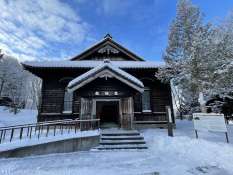
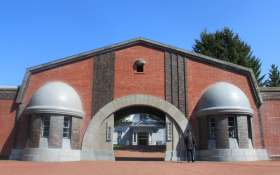
Prisons were built mainly in Kabato, Sorachi, and Kushiro, which extended into Abashiri in 1890. Due to the region’s forbidding landscape where harsh winters bring drift ice to the shore, only the most hardened criminals were sent here. At Abashiri Prison, the inmates served their life sentences doing heavy labour for the development of the area, including constructing 228 kilometers of road between Asahikawa and Abashiri. In this wild frontier, over 200 prisoners died from various reasons, including attacks by brown bears and wolves; those who tried to escape were executed.
When a fire broke out in 1906, it destroyed almost the entire prison, save for one single cell block. The prison was then reconstructed by inmates to its present configuration by 1909.
The Abashiri Prison Museum today
The original prison was in operation from 1890 to 1984, and then relocated to its present site. Today, the Abashiri Prison Museum exhibits more than a dozen buildings and structures of the old prison. The main attraction is the main prison building which was completed in 1912 and features five single-storey prison blocks that extends from the Central Guard House.
The extended prison wings – each illuminated by skylights – are connected to the Central Guard House by roofed passages, with the facades clad in clapboard. The prison blocks each house over 200 cells with barred windows, in addition to solitary confinement cells (you can enter some of the cells). Walking along the corridors, you can see the incredible details of the woodwork, from the prison walls and doors to the pitched roof – built without the use of machinery.
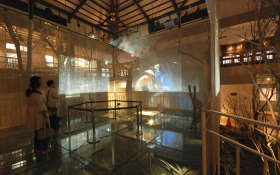
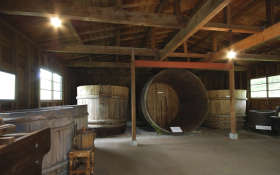
Life at Abashiri Prison improved after the reconstruction; the cells had heating during winter, and inmates were allowed into the bathhouse once a week to have a bath (15 inmates were allowed at a time, taking 15 minutes per bath). Prisoners worked on vegetable farms rather than harsh frontiers, and several farmhouse structures on the prison grounds – like the storehouses for miso, soy, and vegetables – showcase that part of Abashiri’s history.
The museum’s vast ground also houses a law court, an administration building, a lecture hall, and punishment chambers, among other structures. The Administration Building boasts a Western-style architecture complete with clapboards, gabled roofs, and semi-arched dormer windows. One of the few brick buildings on site is the punishment chamber, which was a windowless hut reserved for inmates who broke the rules.

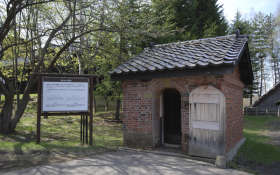
The prison was not all about punishment though – the lecture hall, built in a more traditional Japanese-style architecture, provided inmates with spiritual relief where Christian ministers and Buddhist monks preached morality.
Visiting the museum
The museum compound is vast, and you can easily spend half a day here, although there are suggested courses lasting an hour to see the main buildings. There are also free guided tours. When visiting each area, you will see many life-sized mannequins depicting what life was like back in the Meiji era.
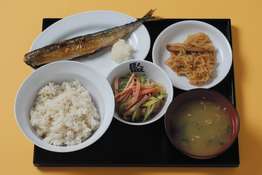
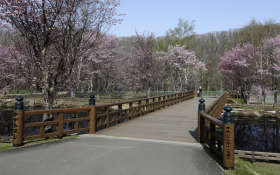
If you want a real taste of present-day prison life, you can try a “prisoner meal” (900 yen) at the Kangoku Shokudo Diner inside the museum for an unusual, inexpensive lunch. This is the meals provided to prison inmates at the current Abashiri Prison, which is grilled saury or mackerel served with rice, 2 side dishes, and miso soup.
Abashiri Prison Museum
Address: 1-1 Aza Yobito, Abashiri, Hokkaido, 099-2421
Entry fee: 1,100 yen for adults (1,500 yen starting from April 2022)
Opening hours: 9am - 5pm (Subject to change depending on the season)
Website: Official Website (kangoku.jp)
























































